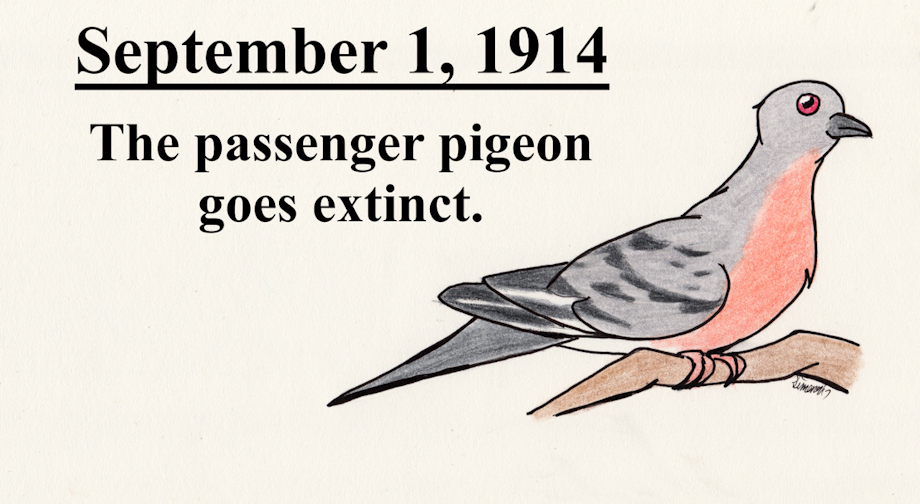On September 1, 1914, Martha, the last known passenger pigeon, dies at the Cincinnati Zoo. A native to North American, the passenger pigeon once existed in vast numbers on the continent and even served as a source of food for Native Americans and even early European immigrants. Unfortunately, the species suffered greatly from the destruction of native habitat, a situation to which it was not as readily able to adapt as other species such as the mourning dove, and overhunting. Deforestation, done for such reasons as clearing land for agricultural use and to produce lumber and fuel for a growing nation, resulted in the destruction of a significant portion of the pigeon's habitat. While other species have been able to survive near extinction through small, isolated populations (such as the kakapo of New Zealand), the passenger pigeon was a highly social creature and required a large population to survive, a population the size of which couldn't be supported by the forests which remained. Commercial hunting due to the bird's use as a cheaper source of food resulted in overhunting which further devastated the passenger pigeon's declining numbers. Recently, there has been suggested that a natural low in the pigeon population's numbers also coincided with this period, resulting in a situation which doomed the species to extinction.
The fate of the passenger pigeon has, however, resulted in some good. The pigeon's extinction raised awareness for conservation efforts, especially at a time when several wildlife species were in danger of a similar fate. Since then, various laws and policies have been enacted and agencies established to protect, preserve, and conserve America's diverse wildlife and natural resources. Today, cooperation between recreational hunters and fishers and state and national agencies as well as taxes and voluntary donations made by outdoorsmen and women help to create and maintain healthy populations of America's wildlife species.
There has also been debate regarding the possibility of resurrecting the passenger pigeon through the use of cloning. Though there is believed to be a suitable host for doing such with the rock pigeon, the major hindrance to such an endeavor is the lack of viable passenger pigeon DNA. Much of what tissue sample which remain possess damaged and/or contaminated DNA due to preservation and storage procedures of the time; however, there is some hope in the possibility of mapping the passenger pigeon's genome. Even so, the social characteristics of the species would still most certainly be lost to time as there would be no passenger pigeon from which the cloned chick could learn.
Keywords
bird
37,527,
pigeon
596,
this day in history
249,
tdih
244,
extinct
116,
wildlife
110,
extinction
36,
conservation
6,
passenger pigeon
2,
wildlife conservation
2,
september 1
1
Details
Published:
7 years, 4 months ago
02 Sep 2017 00:02 CEST
Initial: 1979434faccb084f463cafd9f288ec2b
Full Size: b9368eb94601ffc06033d5ac03b88875
Large: 2ba44195360375fe4fff2c4a45d2bcd3
Small: 7333cb92c830fdcf69628e27f78c331a
Stats
29 views
4 favorites
5 comments
